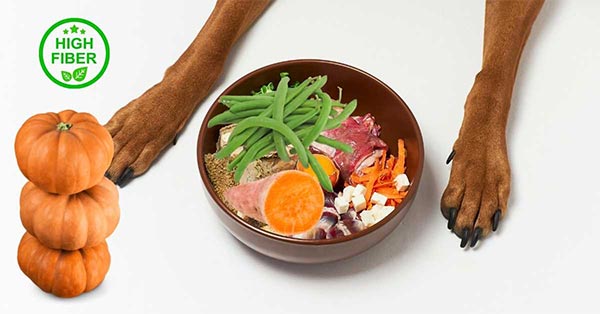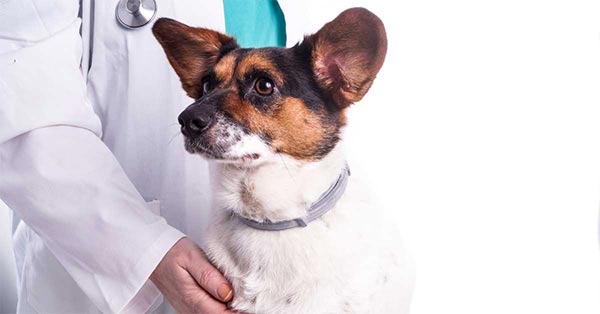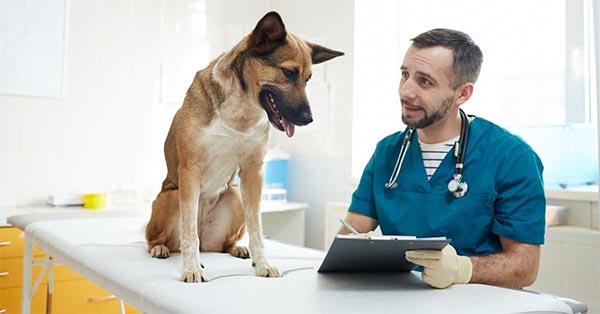Most dogs express their anal glands naturally when they defecate. However, there are rare occurrences when your dog is unable to do so. To avoid that situation, you need to step up now. So, do you wonder How To Help Dogs Express Glands Naturally? Read below and find out for yourself.
In this article, we will cover:
- How To Help Dogs Express Glands Naturally? Top 10 Ways
- How To Tell If Your Dog Needs His Anal Glands Expressed?
- And more…

How To Help Dogs Express Glands Naturally? Top 10 Ways
You can help your dog express glands naturally by increasing the fiber in their diet, increasing water intake, taking them for exercise regularly, reducing their weight, providing probiotics and prebiotics, providing Omega 3 supplements, using homeopathic silica, treating allergies, and avoiding manual gland expression.
While dogs express their anal glands naturally without any help from humans, you can still make sure it remains the same for their entire life. It is because expressing anal glands manually is not only disgusting for you but also equally painful for your dog if they have anal gland issues.
So, here are the top 10 ways how to help dogs express glands naturally and smoothly without any human intervention:
1. Increase Fiber-Rich Diet

According to Katie Finlay at the American Kennel Club, fiber is one of the most overlooked dog food nutrients. However, it has exceptional benefits for dogs especially if they have anal gland issues.
Adding fiber to your dog’s diet can aid digestion and reduce diarrhea and constipation in dogs. As a result, dogs have consistent stools that can put adequate pressure on the anal sacs to empty them naturally when your dog poops.
For an average healthy dog, 5% fiber is considered adequate in dog foods. So, always check the label before buying commercial foods for your dogs.
Subsequently, you can add fiber to your dog’s diet by making sure they eat vegetables that have a good amount of fiber. It includes:
- Green beans: Steam some green beans in a microwave, cool them, and chop them into small bites. Add it to your dog’s food and you are good to go!
- Pumpkin: A large dog can eat 1-4 tablespoons of cooked pumpkin every day to boost its digestion. You can also use canned pumpkins that do not contain sugars or other additives.
- Sweet Potatoes: A medium sweet potato contains 3 grams of fiber. Just take a sweet potato, peel it, and microwave it till you can pierce a fork through it. Then, mash it and add 2-3 tablespoons to your dog’s food bowl.
Also Read: A Guide To Getting Your Dog’s Diet Right
2. Increase Water Intake
According to PetMD Editorial, a dog should drink one ounce of water per pound of weight every day unless otherwise directed by the vet.
Although you need not measure it accurately every time you give water to your pet, it should roughly reach this figure so that your dog can pass stools conveniently.
We know that some dogs are not fascinated by their water bowl and refuse to drink water from them. So, you need to come up with unique ideas to wow your dogs.
Install a water fountain for your dog as they might like running water more than the still water. The Veken Pet Fountain is our pick as it has three flow designs- waterfall, flowers, and flower bubbles to keep your pet engaged.
Subsequently, you can add warm water to your dog’s kibble. Not only does it improve digestion and chewing, but it also makes the food more flavorful.
3. Regular Exercise

According to Anna Burke at the American Kennel Club different dogs require different levels of exercise. For example: High energy dogs like Australian Shepherd and Border Collie require more exercise than Bulldogs and Basset Hounds.
Thus, it is important to provide the right amount of exercise to your dogs depending on their breed, age, and other factors. A veterinarian will be able to guide you best here.
But, if you are looking for some common tips, we are here to your rescue. For any dog, going for a walk in the neighborhood every day is good as it will make their rectal muscles stronger.
Slowly, when your dog starts enjoying the outdoors, you can push them for hiking, swimming, fetch, and dog sports organized in the community.
4. Weight Reduction
Obesity is one of the main reasons for anal gland diseases in dogs. So, if your dog is overweight, he is likely to suffer from anal gland infections often. So, what can you do to reduce the weight of your dog?
According to Krista Williams and Ernst Ward, DVM at the VCA Hospitals, creating a weight reduction plan for your dog is a good start.
However, you should never start such a plan without advice from a veterinarian as your dog may be gaining weight due to underlying health conditions like Cushing disease.
The veterinarian will calculate the ideal weight for your dog according to its age, breed, and underlying health conditions. Generally, a 3-5% weight loss per month is considered safe for dogs.
5. Provide Probiotics & Prebiotics Supplements
Probiotics adjust the amount of bacteria present in the intestines whereas prebiotics serve as a source of energy for the intestinal bacteria. Together, they help dogs in firming their stools so that they can discharge fluid from the anal sacs.
Although you can feed probiotics to your dogs in the form of fermented food and veggies, it is difficult to do so. That is why people often buy probiotic and prebiotic supplements from the stores.
The Purina FortiFlora Probiotics for dogs is our pick as vets recommend it too. These probiotics are good for both puppies and adults who suffer from diarrhea often.
6. Provide Omega 3 Fatty Acid Supplements
Omega-3 fatty acids are known to reduce gland inflammation and irritation. They also help with gland impaction.
Dogs cannot produce Omega-3 fatty acids on their own, hence they need to get it from their diet. Fish oil is one of the dietary supplements for your dogs that is high in Omega-3 fatty acids.
You can choose the fish oil depending on your dog’s breed, weight, age, and health status. Speak to your veterinarian and check with them if it is safe for your dog to consume fish oil.
Once they approve, you can check out the PetHonesty 100% Natural Fish Oil for dogs as it promotes a healthy coat and immune system.
7. Use Warm Compress
If your dog is having a hard time expressing their glands naturally, you can try warm compress to encourage anal gland expression by putting a warm cloth under their back.
Soak a washcloth in warm water laced with 1 to 2 tablespoons of Epsom salt or sea salt for around 15 minutes. Hold it under your dog’s butt for five to ten minutes twice a day till they do not express their glands naturally.
Just remember two things- Use a clean cloth every time to avoid infections and wear disposable gloves. Once you are done, throw the gloves and clean the area where your dog was sitting.
8. Use Homeopathic Silica
One great homeopathic medicine for anal glands is Silica. Silica 6C is a supplement that aids in the removal of excess discharge from the dog’s anal glands including pus and stools.
Use it when your dog’s glands could use a little assistance emptying their glands twice a day for at max one week. Here is how you can use Silicea 6C for naturally expressing your dog’s anal glands:
- Add 3-5 Silicea 6C pellets in a small cup of filtered water and stir it for 20 seconds. Do not touch pellets with bare hands as it can hamper the remedy.
- Use a dropper and apply the solution on your dog’s gums twice a day. Make sure your dog does not eat before and after applying it for 20 minutes.
9. Treat Allergies

Some common food allergens affect dogs as well. These include grains like wheat and corn, proteins like chicken and egg, legumes, and dairy-based products.
If you have fed any of these to your dog and it develops symptoms like an itchy belly, watering eyes, red and inflamed lips, or bloody nails, take it to the vet.
The vet will conduct an allergy test and you will know if your dog is allergic to certain food. Refrain from feeding such foods to your dogs as food allergies can irritate your dog’s anal glands.
10. Refrain From Manual Anal Gland Expression
Do not express your dog’s anal glands manually unless it is necessary. The incorrect and unessential squeezing of anal glands can rupture them and cause your dog more pain and discomfort to your dog.
If your dog’s anal glands are impacted and inflamed, only then it is advised to use your hands to express their anal glands. The best would be for you to take your dog to the vet and let them do it.
How to Tell If Your Dog Needs His Anal Glands Expressed?

According to Dr. Tammy Hunter, DVM, and Ernest Ward, DVM at the VCA Hospitals, the anal sacs are two tiny pouches that are positioned on either side of the anus at around Four O’Clock and Eight O’clock. So, your will notice that your dog’s anal glands need to be expressed manually if they aren’t placed where they should be.
It is best to consult your dog’s veterinarian in this first case because they will be able to guide you better.
The second sign that your dog requires anal gland expression is that the firmness of your dog’s stools is insufficient. Dogs with loose and mushy stools find it hard to exert enough pressure on the anal glands to empty them.
Finally, when your dog has an anal gland infection or abscesses near the anus, it requires its anal glands expressed.
The second and third situations could be chronic problems or a one-time thing. It will change from one dog to another. If you want to prevent it from becoming a lifetime issue, follow our top 10 ways to help your dog express anal glands naturally as mentioned.
How To Express Dog Anal Glands Naturally At Home?
According to the American Kennel Club, the majority of canines can naturally express their anal glands. Dogs can regularly leak little amounts of liquid from their anal glands when pooping.
Your dog’s anal glands can also naturally express themselves when they are stressed. When dogs are nervous or scared, their anal glands may unintentionally express themselves, resulting in a strong and foul smell. So, you do not need to do anything to express your dog’s glands.
Their anal glands need to be expressed at home when they are unable to do so themselves. However, if you have never done it before, take help from a professional like your dog’s veterinarian or groomer. You can learn from them and do it at home the next time!
Does It Hurt A Dog To Express Glands?
One of the concerns about how to help dogs express glands naturally is if it would hurt the dog.When dogs express their anal glands naturally, they hardly feel any pain. However, if the dog’s glands were expressed manually by the vet or you, dogs might feel slight discomfort as your fingers squeeze the fluid out of their anal sacs.
It will generally last 24 hours if they do not have any pre-existing conditions. You will see them chewing, licking, and scratching their butt often during this time. Nevertheless, this does not particularly affect their mood much. So, you have nothing to worry about.
However, if your dog is experiencing pain after having its glands expressed for more than 24 hours, it is most common that the dog has anal sac disease. It means they have impaction, abscess, sacculitis, or inflammation of the anal glands.
Depending on your dog’s stage of anal sac disease, you will notice symptoms like scooting, licking, biting, scratching, difficulty in pooping, or blood and pus in stools. It is when you should seek medical help from your veterinarian.
Vets will administer anti-inflammatory ointments, pain relievers, or antibiotics for the affected glands after conducting the physical examination of your dog.
Also Read: 8 Reasons Why is my Dog in Pain After Glands Expressed? +6 Tips
If your dog requires a manual anal gland expression, the veterinarian is the best person for the job. They know how to express anal glands, thus causing less pain to your dog.
How Much Do Vet Charges To Express Glands?

So, if you want to get your dog’s glands expressed by a vet, they will charge approximately $25-$50. However, this is not a fixed amount. Some vets might charge more depending on the procedure or treatment your dog requires.
However, if your dog has an anal sac disease – if your dog suffers from anal inflammation, anal infection, or has abscesses, the vets charge a higher price ranging between $100-$1000 depending on your dog’s health condition. This price might go up if your vet advises hospitalization.
If you have to get your dog’s anal glands expressed often, you can talk to them about the prices. Also, some vets teach you how to express anal glands at home easily. Additionally, you can check the cost with your dog’s groomer and book an appointment there if they charge less.

